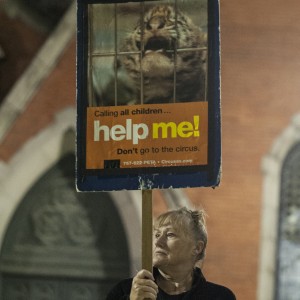By Sarah Jackson | gargoyle@flagler.edu
Angelea Sakai, better known as “Midieval Fantasy,” has no reservation about shocking her audience with the unexpected.
“In my first show, I came out on stage as a devout nun. The song I chose was ‘Oh Lord, Wake the Dead’ by Voltaire, about losing faith in God,” Sakai said. “As the song continued, I stripped out of the nun costume and ended looking like a gothic dominatrix.”
Sakai is a model and burlesque performer for the group, “The Black Widow Dolls,” based in Jacksonville, Fla.
“One of the misconceptions I hear often is that burlesque is nothing more than stripping. This is not exactly true. Yes, burlesque is stripping, but it’s more about the tease than just taking off your clothes.”
According to an article by burlesque performer Dita von Teese in The Independent, titled, “A Brief History of Burlesque,” burlesque led two lives, one in ancient Greece and eventually all over Europe where it was well known as a bawdy form of satire, and the other in America where it became known as the strip tease.
But burlesque started before that. Aristophanes, the poet and playwright who penned “Lysistrata,” can be seen as the father of burlesque.
“The play set the stage for centuries of ribald drama,” von Teese said in the article. “And the way I read it, these women are teasing their husbands, guiding their minds towards sex, then locking it away.”
Much like how burlesque performers tease their audience.
“Burlesque dancers are varied, using many methods of unclothing, be it through balloons, fans or layers of clothing being meticulously peeled off,” Sakai said. “It is not about the strip, more as it is about the tease.”
Von Teese said in her article that “illusion is the nature of burlesque.” In the Victorian era, burlesque dancers would wear flesh-colored tights to give the illusion of naked flesh when in reality the burlesque dancers were still covered up.
And, according to von Tees, burlesque dancer Lydia Thompson, who founded the burlesque group “The British Blondes,” started it all. This enticed and enchanted the male audience, and burlesque eventually developed into a full nighttime entertainment show that included “chorus girls, comedy routines, and song and dance.”
Von Teese’s own brand of burlesque owes more to the showgirls of la belle époque in Paris.
Another common misconception about burlesque is that the female performers have to be young and attractive in order to entice the audience. This is not always the case though.
“There are women in their ’60s, and even older, that still perform burlesque regularly,” Sakai said. “As for the perfect body, burlesque isn’t about the perfection of the female form. It is about the confidence of the woman and female empowerment.”
According to von Teese’s article, the 1950s marked an era of more curvy burlesque performers, and their big personalities matched their hourglass curves.
“I myself am five-foot-one and 160 pounds,” Sakai said. “I’m not the best looking person in Jacksonville and I’d never claim to be. But, I have no problems with who I am or how I look, and when I do burlesque, is has never been about my body so much as it has been about what I was doing.”
Burlesque is a performance art that allows the female performers to exude confidence, and to express themselves.
“What could be more amazing than that? To find songs that tell a small portion of a story about who I am and share that in my own way with an audience?” Sakai said.




Be the first to comment on "The art of burlesque"